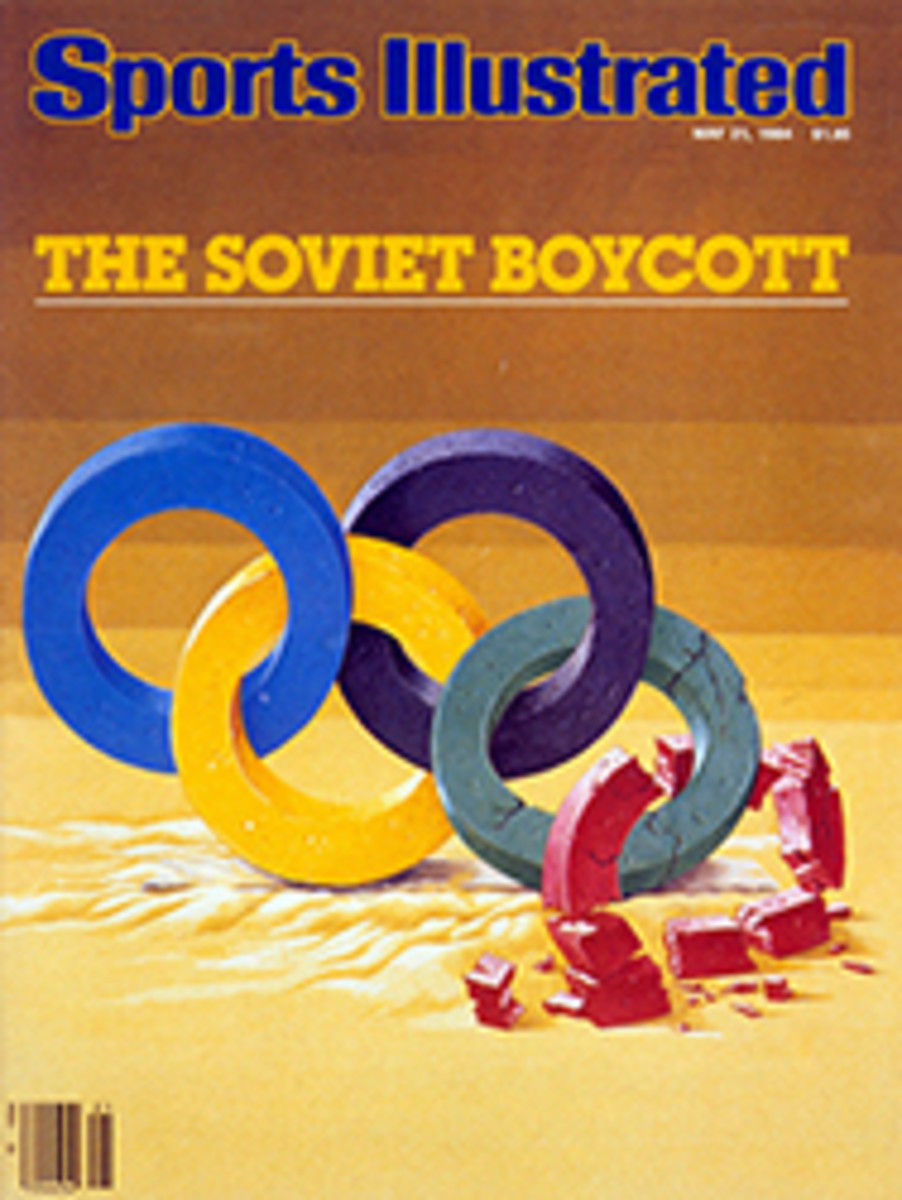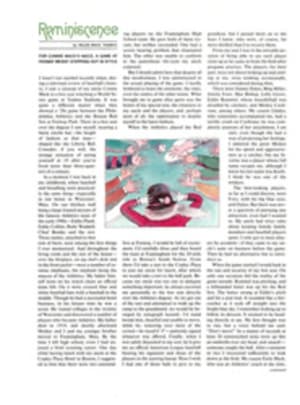
Stepping up the beat for the 500
For most of last week, Tom Sneva, the defending Indianapolis 500 champion, patiently watched Mario Andretti steal the daily show at the Speedway. On Monday, Andretti went 207 mph. On Wednesday he went 210—literally off the speed charts. On Thursday he backed it up, and on Friday, in ideal atmospheric conditions for speed—cloudy, calm and cool—he hit 212. After qualifying on Saturday, a copy of The Indianapolis Star was on the workbench in Sneva's garage, ANDRETTI FAVORED TO WIN POLE TODAY, said the headline. Someone had scratched out "Andretti" with a ballpoint pen and had written in "Sneva." And there was Sneva, sitting on the bench next to the paper, accepting congratulations for the record run he had just completed—and smiling as if he had just swallowed a Bic.
Sneva Was king on a day when the four-lap qualifying record was broken twice and the one-lap record five times, three times by Sneva. Only the checkered flag stopped his assault, leaving him with the records of 210.689 mph for one lap and 210.029 for four, breaking Teo Fabi's '83 marks of 208.049 and 207.395.
It was quite a day at the Brickyard—after quite a week. Indy is often more spectacle than race, but not this year in the run for the pole position. The 200-mph barrier had first been broken back in 1977—by Sneva. This year it was smashed to smithereens. Spring rains had scrubbed the track, and for most of the week the weather had been ideal for the production of horsepower by the turbo-charged Cosworth V-8s. By the week's end, if you hadn't cracked 200—26 drivers had—you were slow, and in danger of not making the 33-car field.
This year's 500 could be a memorable one, for rarely has the field been more evenly matched. That's because of the March 84C chassis, which is state of the art and available for purchase—a combination rarely seen in motor racing. The 84C is the brainchild of England's Robin Herd, chief designer for March, and was riveted into reality by the March factory in the village of Bicester. March built and sold some 44 84Cs, and when so many teams have the same equipment, the racing gets good. Everyone who could afford or wanted an 84C this year has one, one exception to the latter qualification being Andretti, who chose to drive a Lola-Cosworth, another English-made car. Even Roger Penske bought three Marches for his two drivers, Rick Mears and CART champion Al Unser—three big gulps of pride, because the purchase pushed the 1984 models of his own Penske cars, which have ruled Indy Car racing for most of the last seven years, onto the trash heap.
The 84C is beefed up in the area around the driver's feet, which is a good thing. It doesn't take much of a mistake, or much of a mechanical failure, to send an Indy Car nose-first into the wall. Accompanying the record-breaking speeds were 12 crashes, the worst of which put 26-year-old Michael Chandler hard into the Turn 3 wall on Friday and into the hospital, unconscious. His condition as of Sunday was "serious but stable" even though he hadn't regained consciousness. Chandler drove Dan Gurney's Eagle, which has a Pontiac stock-block engine, and had been optimistic about this race, as well as proud to be in the only all-American car in the race.
Was there too much speed? Despite the fact that the question gets louder each year, it doesn't seem to be heard any better. A.J. Foyt smiles and says, "Records were made to be broken," as if human capabilities were infinite, and why not 250? Sneva, who's generally considered the bravest driver out there, thinks it's crazy to go on like this. He believes he knows the reason why the cars keep getting faster: The crowds love it. And those who run the sport are too blinded by speed to see that close racing at 190 is a far better show than risk-taking at 210.
Mears had been Penske's rabbit all week—running just a tick behind Andretti. He was the first driver to qualify, and when he set a record of 208.502 mph on his first lap, the 200,000 spectators knew they were in for a day of unprecedented speed. He finished with a four-lap record of 207.847. But he knew Andretti had him covered, and when Mario reeled off a 209.678 on his first lap, Mears's crew puckered up to kiss their infant record goodby. But after two more laps, both faster than Mears's best, with the checkered flag literally in sight, Andretti's engine cut out, slowing him to 202 on the final lap and dropping his average to 207.467 for the run.
The problem was in the "spark box," where electronic-ignition things happen. "Modern junk," said Andretti, who wants this 500 badly. The Speedway has treated him like junk ever since he won the 1969 race, and at 44, he knows he's running out of time.
Andretti's son, Michael, 21, who had passed his rookie test and cracked 200 on the same day, May 5, beat Mario, too. Michael's 207.805 put him on the inside of the second row, and with his father on the outside, the Andrettis were sandwiching two-time winner Gordon Johncock.
In the warmup session Saturday before qualifying began, Sneva had a 210.72. His first qualifying lap was 209.113, a whisker behind Andretti's best, but then he zoomed away. "It's a new track record!" the announcer shouted—three consecutive times. Progressively faster laps are almost unheard of in qualifying: A driver can't hold his breath that long, and the tires get hot, causing handling to deteriorate. Sneva's car was set up "loose," so that when the tires heated, the car's handling would improve. It wasn't a secret strategy; explaining why everyone doesn't employ it, Teddy Mayer, co-owner of Sneva's team, said, "There aren't many drivers who are brave enough to drive the first lap that loose." He added, "I've had world champions like Niki Lauda drive for me, and Sneva's as good as any of them in his understanding of the car."
Sneva brought a strange sort of comeback story to the Speedway. Last year he had shouting matches with his crew chief, George Bignotti. By the end of the season, dissension racked the team, and Sneva split. Then his sponsor, Texaco, split from him. For about seven weeks over the winter, Sneva was a free agent—and couldn't get a ride. Prospective owners wanted more than his credentials; he was being asked to bring a well-heeled sponsor in. As the engineering has come down to invisible electrons and thin air—spark boxes and aerodynamics—the economics has come to the point where even an Indy 500 winner is asked to bring money to a team in order to get a ride.
But Texaco changed its mind and came back to Sneva, which enabled him to sign with Mayer Motor Racing Ltd., a formidable challenger to Team Penske. Penske has won six Indy Car championships in the last seven years. The new team, run by two Americans, Mayer and Tyler Alexander, won Indy in 1974 and 1976 with Johnny Rutherford driving. At that time they were campaigning as Team McLaren and were based in England. In 1979 they began racing in Europe full time. Now they're back, and nobody knows it better than Penske.
He had Howdy Holmes to remind him. Howdy Who? Holmes, the 1979 Rookie of the Year at Indy, is a grandson of the founders of the Jiffy Mixes. In 1936 his grandmother was widowed, but continued the company's success. Jiffy is the sponsor that Holmes took to Mayer to secure a spot on the team, alongside Sneva. It was the 5'4½" Holmes who bumped Mears to the outside of the front row by qualifying alongside Sneva with a convincing 207.977.
But it was Sneva who won the day. He wouldn't call his resisting the lure of daily races—and psych games—with Andretti and Mears sandbagging. "There was no sense in it, except maybe for sponsor exposure or team morale," Sneva said. "There's only so many ticks in the old beater, and you don't want to use up too many of them too soon." Then someone informed Sneva that he had touched the wall with a rear tire on one of his qualifying laps. Sneva just smiled and shrugged. "Sometimes you got to graze it just a little to get maximum speed," he said. If there were a way to count ticks in the old beater, they'd probably have to make a new chart for him on that one.
TWO PHOTOS
Sneva held his breath long enough to drive his March to a record average of 210.029.
PHOTO
Holmes got around the track in a jiffy.
PHOTO
Andretti: A faulty "spark box" meant snakebite again.

